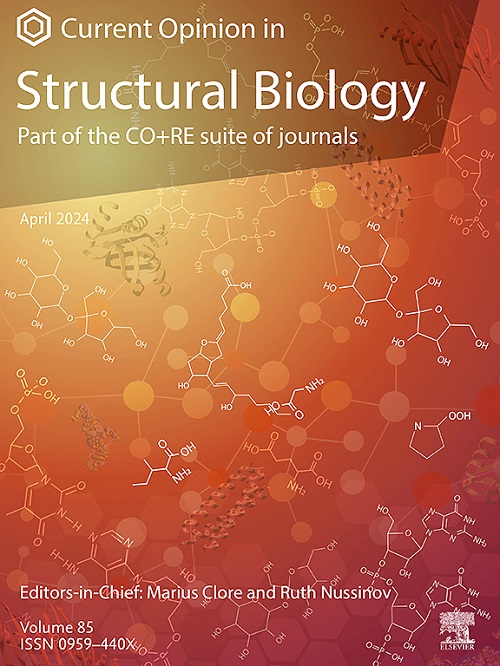Dynamic characteristics of proteolysis-targeting chimera systems revealed by in silico computations
IF 6.1
2区 生物学
Q1 BIOCHEMISTRY & MOLECULAR BIOLOGY
引用次数: 0
Abstract
Proteolysis-targeting chimeras (PROTACs) achieve irreversible clearance of target proteins by hijacking the ubiquitin–proteasome system, breaking the design paradigm of traditional inhibitory drugs. The development of computational approaches has effectively promoted the rational design of PROTACs, yet existing methods mainly focus on predicting the static structure of PROTAC systems, with methodological gaps in analyzing their dynamic characteristics. Knowing that the dynamic behaviors can dramatically influence the stability and degradation efficacy of a PROTAC system, we systematically summarize the recent progresses of using structure-based and structure–artificial intelligence–hybrid methodologies for characterizing the dynamic behaviors of PROTAC systems, with a focus on elucidating the dynamic characteristics of target protein–PROTAC–E3 ligase ternary structures and prediction of their key properties.
用计算机计算揭示蛋白水解靶向嵌合体系统的动态特性。
蛋白水解靶向嵌合体(Proteolysis-targeting chimeras, PROTACs)通过劫持泛素-蛋白酶体系统实现对靶蛋白的不可逆清除,打破了传统抑制药物的设计范式。计算方法的发展有效地促进了PROTAC系统的合理设计,但现有方法主要集中在预测PROTAC系统的静态结构,在分析其动态特性方面存在方法上的空白。鉴于动态行为对PROTAC体系的稳定性和降解效果有重要影响,本文系统总结了近年来基于结构和结构-人工智能-混合方法表征PROTAC体系动态行为的研究进展,重点阐述了目标蛋白-PROTAC- e3连接酶三元结构的动态特征及其关键性质的预测。
本文章由计算机程序翻译,如有差异,请以英文原文为准。
求助全文
约1分钟内获得全文
求助全文
来源期刊

Current opinion in structural biology
生物-生化与分子生物学
CiteScore
12.20
自引率
2.90%
发文量
179
审稿时长
6-12 weeks
期刊介绍:
Current Opinion in Structural Biology (COSB) aims to stimulate scientifically grounded, interdisciplinary, multi-scale debate and exchange of ideas. It contains polished, concise and timely reviews and opinions, with particular emphasis on those articles published in the past two years. In addition to describing recent trends, the authors are encouraged to give their subjective opinion of the topics discussed.
In COSB, we help the reader by providing in a systematic manner:
1. The views of experts on current advances in their field in a clear and readable form.
2. Evaluations of the most interesting papers, annotated by experts, from the great wealth of original publications.
[...]
The subject of Structural Biology is divided into twelve themed sections, each of which is reviewed once a year. Each issue contains two sections, and the amount of space devoted to each section is related to its importance.
-Folding and Binding-
Nucleic acids and their protein complexes-
Macromolecular Machines-
Theory and Simulation-
Sequences and Topology-
New constructs and expression of proteins-
Membranes-
Engineering and Design-
Carbohydrate-protein interactions and glycosylation-
Biophysical and molecular biological methods-
Multi-protein assemblies in signalling-
Catalysis and Regulation
 求助内容:
求助内容: 应助结果提醒方式:
应助结果提醒方式:


